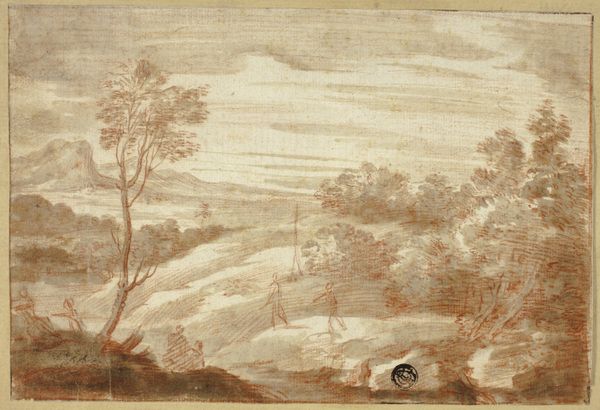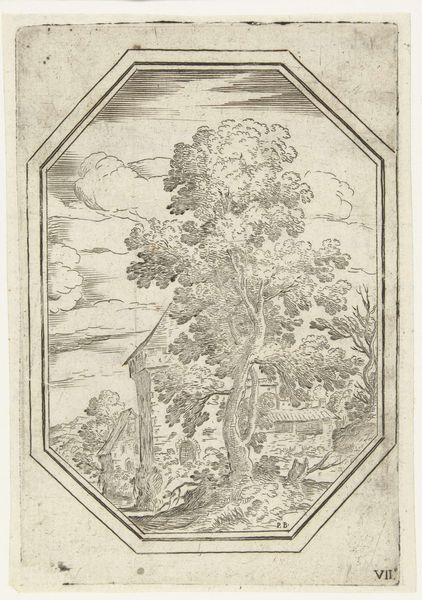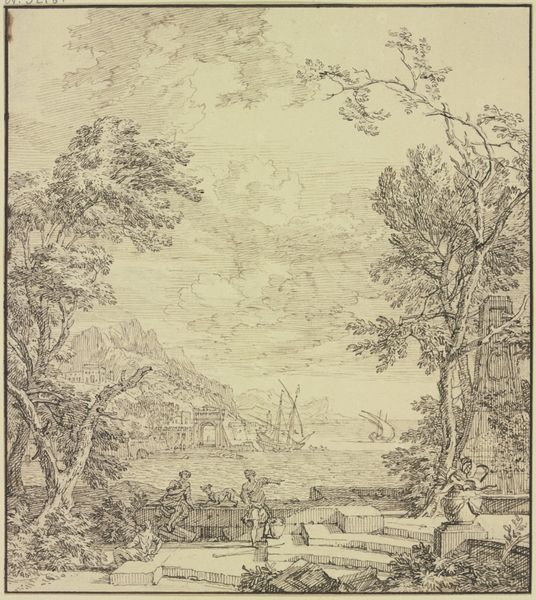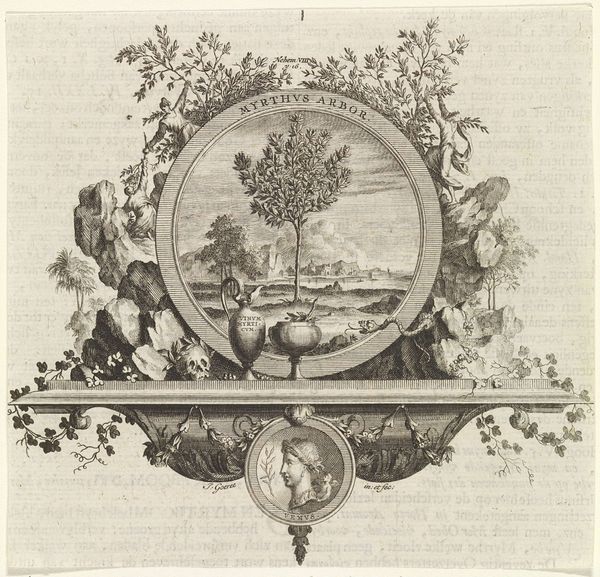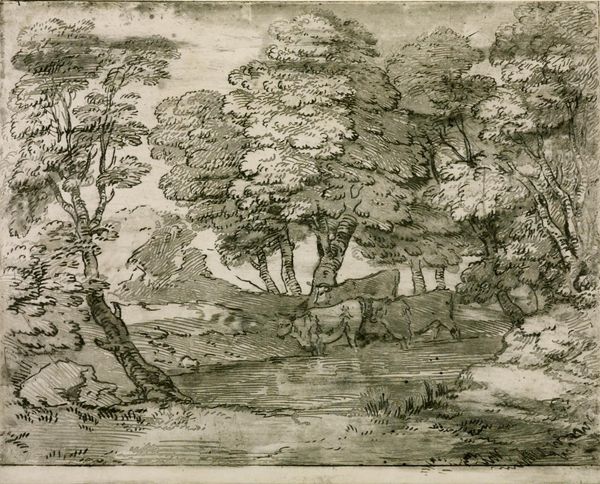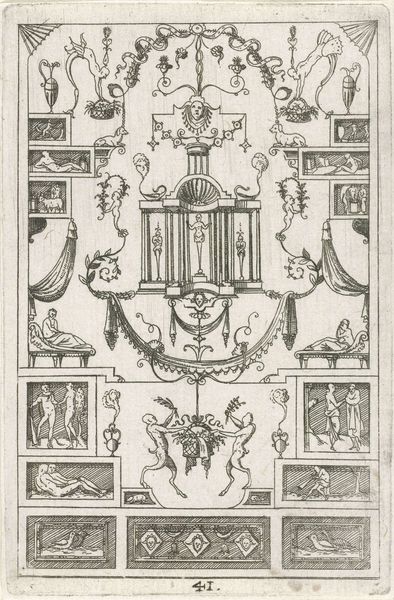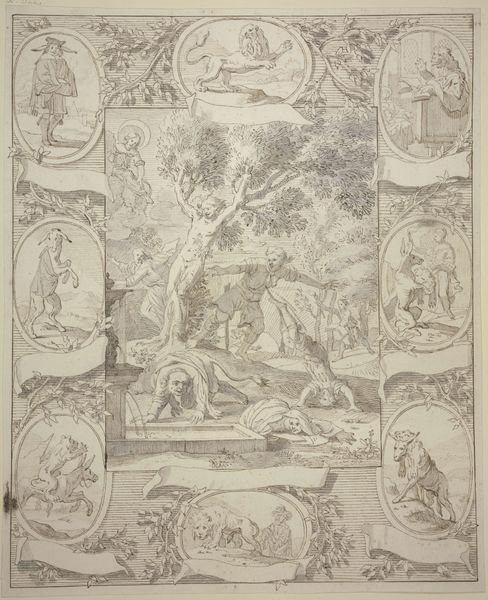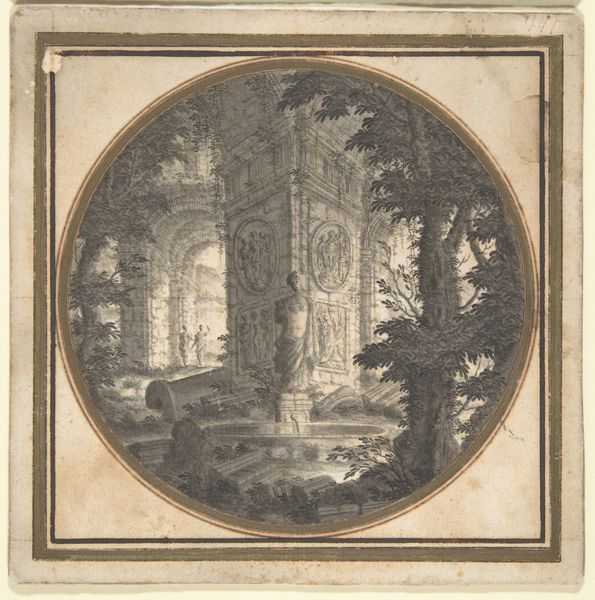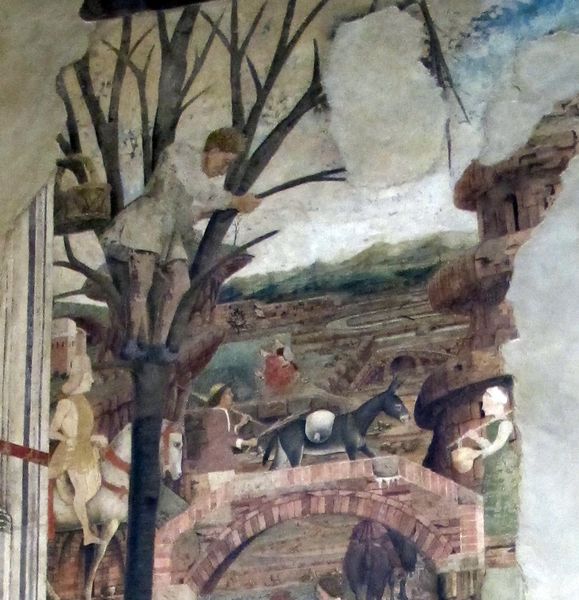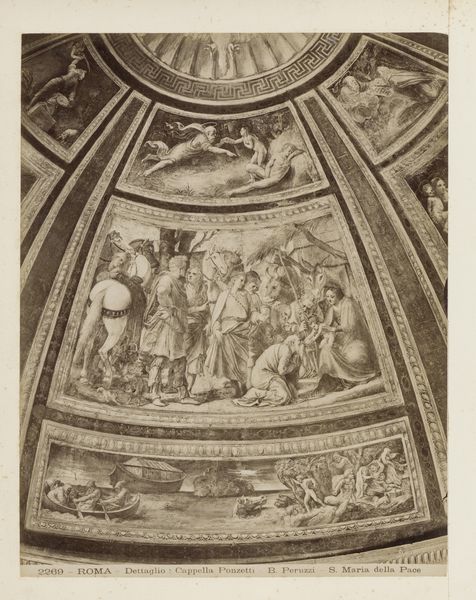
tempera, painting, fresco
#
venetian-painting
#
tempera
#
painting
#
landscape
#
house
#
text
#
fresco
#
oil painting
#
classicism
#
cityscape
#
history-painting
#
academic-art
#
italian-renaissance
Copyright: Public domain
Editor: This is Paolo Veronese’s "Landscape," a fresco from 1565 at the Villa Barbaro. The muted tones give it an almost dreamlike quality, like looking at a faded memory. How do you interpret this work? Curator: This fresco isn’t just a pretty picture; it's a statement about power, land, and visibility in 16th-century Venetian society. It challenges the notion of landscape as merely an aesthetic pleasure. Who do you think it was for? Editor: Presumably the owners of the villa? The Barbaro family? Curator: Exactly. By incorporating their land into the very fabric of their home, the family is literally surrounding themselves with imagery related to wealth and influence. Notice how classical architectural elements, like the columns "framing" the scene, legitimize their status. Editor: So it's like they're saying, "We belong here, as part of this idealized landscape?" Curator: Precisely! It connects the family to a lineage of power stretching back to antiquity. Also, what about that dog? It feels so casual but so posed. Editor: True, it’s right there in the viewer's space, as though wanting to be noticed and admired. It makes me wonder what it symbolizes. Is it just a pet, or does it represent fidelity or perhaps a right to the land? Curator: Excellent point! Considering the era’s patriarchal structures, that dog quietly reinforces existing societal hierarchies and assumptions about gender and property. Editor: It's fascinating to see how seemingly simple landscapes can carry so much cultural weight. Curator: Indeed. By looking at the socio-political dimensions of art, we reveal the silent narratives that shape our understanding of history.
Comments
No comments
Be the first to comment and join the conversation on the ultimate creative platform.
